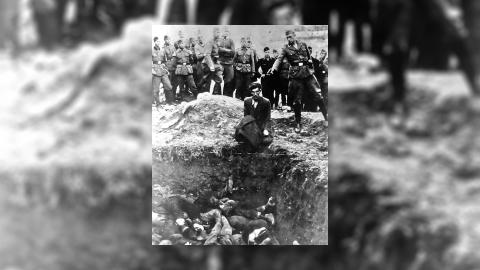60 Seconds of Skill: Q&A with leather worker Hamish Lamley
60 Seconds of Skill is a moment to reflect, a minute from the ads to take a break and watch Craftspeople from the UK make some beautiful objects. Often these items are made in the same way that they have been made for hundreds if not thousands of years. They remind us that History is Alive.
We talk with Hamish Lamley, a leather worker from Scotland, who tells us more about his business, his inspiration and how through modernisation some crafts are in danger of getting lost forever.
'60 Second of Skill' extended cut: Hamish Lamley makes a Pictish inspired sporran:
How long does it take you to make a Sporran from Start to finish?
A sporran takes three days to craft in its entirety, due to the long process of steps, some of which require an overnight rest such as letting moisture or dye to dry out before continuing.
How did you get started in leather craft?
In my late teens I was recovering from surgeries on my back and needed something to keep my hands and mind focussed. I took up leathercraft as a way of therapy and combined it with my love for history and archaeology. I soon became addicted, and it gave me a new direction in life.
You are inspired by the Picts, how close to their traditional leather working skills are your own?
When I am crafting historical items, my techniques are as close as possible as I can get to the craftsmen of the Pictish era. I use the same tools, and the same materials produced in the same ways, as it is all a way of connecting to those ancestral craftsmen.
However, I also produce contemporary goods, and use some modern techniques and materials for these. Sometimes the blend of both can be very rewarding too!
Are these skills in danger of getting lost?
These skills are certainly in danger of getting lost. The leatherworking trade has been in decline since the second world war, with tanneries changing what sort of leather they produce, and then often shutting down. With many modern materials replacing leather, it is seen as becoming obsolete. But leather still has an important role to play and producing historical leather goods reconnects us with our history and archaeology.
How can people go about getting started in leather working?
I love leatherworking because it is very easy to get started. All you need is to pick up some leather and a couple of basic tools and you can start making simple things. There are also people still teaching leatherwork across the world, myself being one of them!
Can you tell us more about your business, where did it all start?
It's really my love for Scottish and Pictish history that inspires my business. I grew up in Inverurie in the North East of Scotland and used to play on the Pictish stones as a bairn. I love crafting practical items that people can use and treasure every day in life but connecting it to our history gives it a deeper meaning to me. In such a way can we honour those who have come before us and share the rich culture of Scotland.
How has the pandemic affected your business? What changes have you had to make?
The pandemic has been difficult as it put a stop to me sharing my skills through teaching, which I have really missed. and of course, as a small business, losing most of your income from the lack of orders and courses is very difficult. On the bright side, I always keep crafting, and the slow period gave me time to work on some projects that I hadn't had time for before.
During lockdown, people have been getting into crafts. Do you think crafting can help with mental and physical wellbeing?
Leatherworking started as a therapy for me, and soon turned into passion, and daresay an obsession? It kept me focussed and gave me pride in what I was creating. Craft is the gift of creation, and I believe it is certainly healthy for mind and body to take up!
What plans do you have for the future?
When the world heals itself from this pandemic and we can travel again, I am really looking forward to getting back into museums abroad to analyse artefacts and recreate them. I also have some large leather boat projects planned with some fellow craftsmen, so taking to the seas is an adventure I can certainly look forward to!
You can find out more about Hamish and Pictavia Leather here. Head over to Sky HISTORY's YouTube channel to watch Hamish make a Pictish inspired Sporran in the full extended cut of his ’60 Seconds of Skill’
















